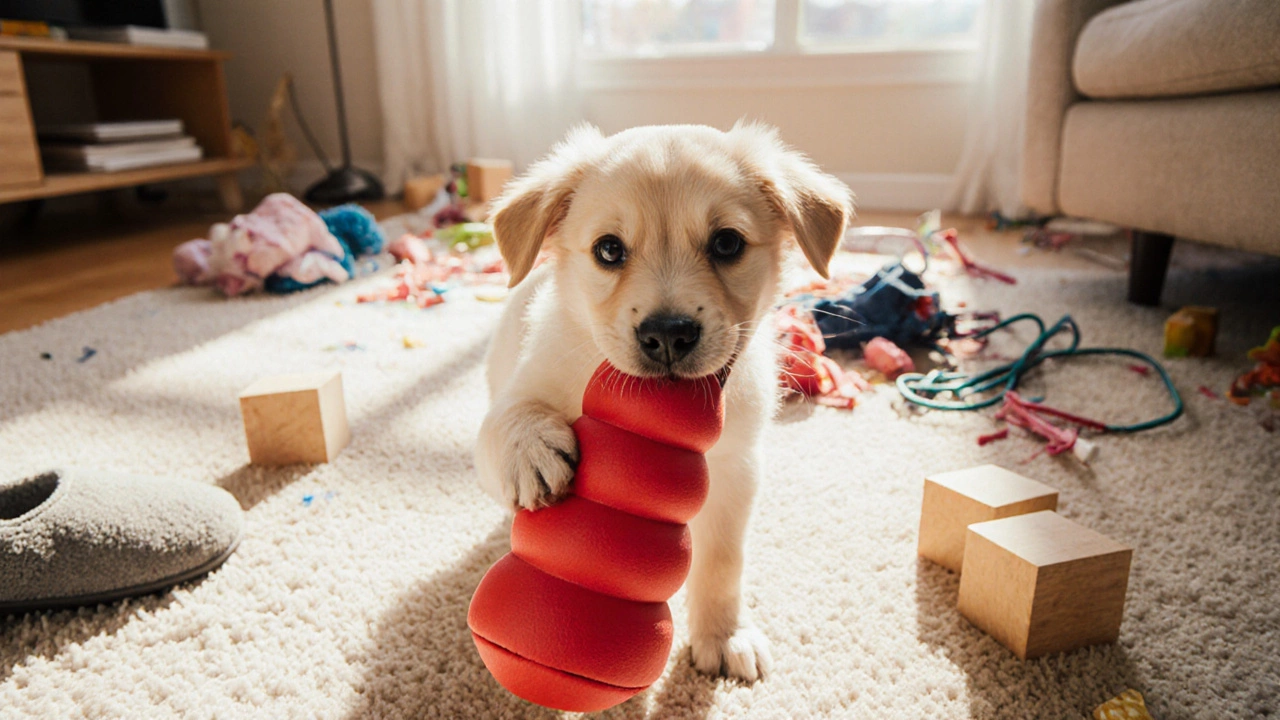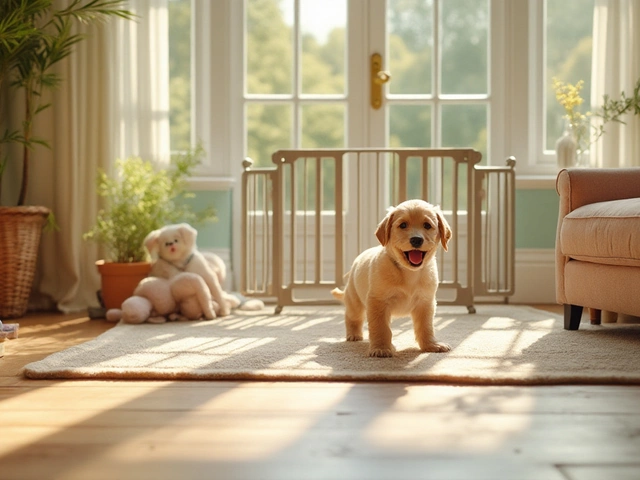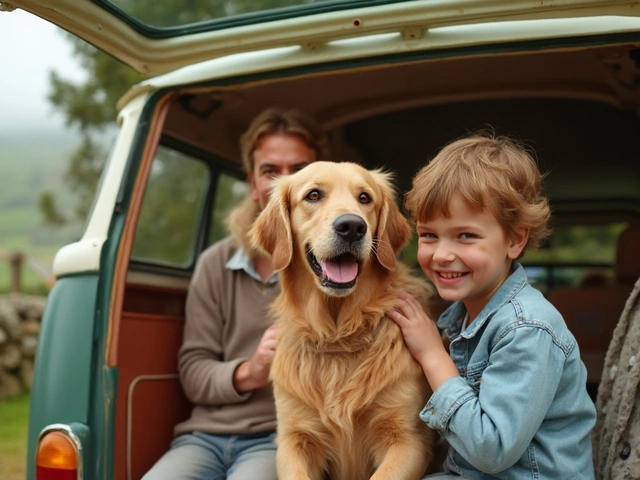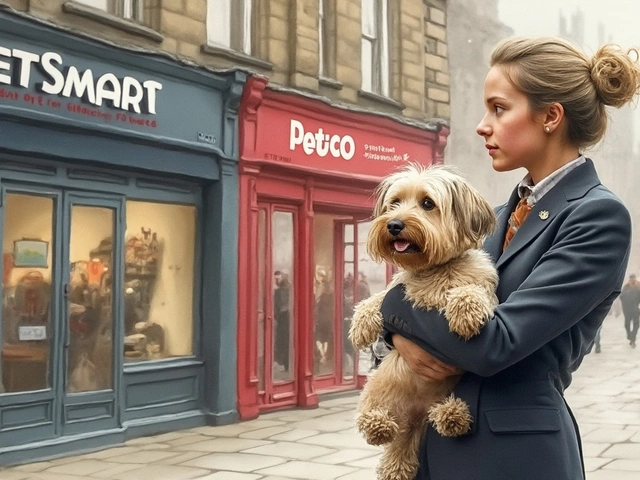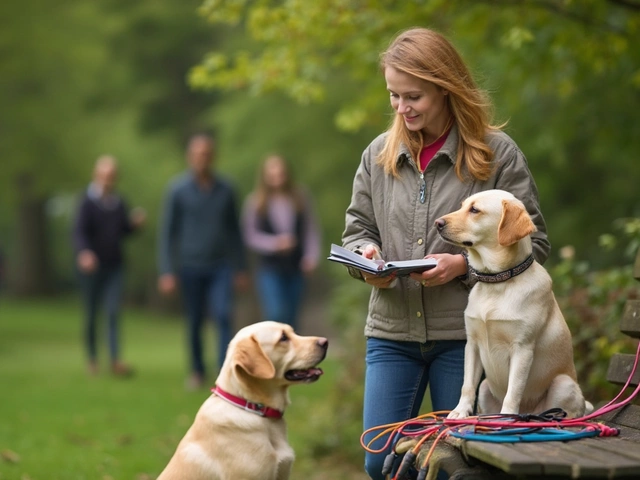Puppy Chew Toy Selector
Answer these simple questions to get veterinarian-recommended chew toy suggestions tailored to your puppy.
When a new pup starts teething, the house can become a battlefield of shredded slippers and chewed‑up cords. Knowing which items are safe can stop the damage and keep your puppy healthy. Below we break down what puppy chew toys veterinarians actually recommend, why they matter, and how to pick the right one for your four‑legged friend.
Why Chewing Matters for Puppies
Chewing is a natural instinct that serves three key purposes. First, it eases the discomfort of teething by applying pressure to the gums. Second, it helps develop jaw strength and coordination. Third, it promotes dental health by scraping away plaque before it hardens into tartar. Vets stress that the right chew can reduce the risk of oral infections, digestive blockages, and destructive behavior later on.
How Vets Evaluate a Chew Toy
Veterinarians use a quick checklist when they assess a toy’s safety:
- Material durability - The toy should resist splitting or shredding that could become a choking hazard.
- Size appropriateness - A toy that’s too small can be swallowed; too large may be uninteresting.
- Non‑toxicity - No harmful chemicals, dyes, or added flavors that could upset a puppy’s stomach.
- Dental benefit - Textured surfaces that massage gums and clean teeth are a plus.
- Ease of cleaning - Toys that can be washed or boiled reduce bacterial buildup.
Top Vet‑Recommended Chew Toys
Below is a curated list of the most frequently prescribed chew items. Each entry starts with a brief definition that includes Veterinarian a licensed medical professional who specializes in animal health and safety endorsement.
| Toy | Material | Durability Rating (1‑5) | Suitable Size (Puppy Weight) | Dental Benefit | Typical Price (GBP) |
|---|---|---|---|---|---|
| KONG Classic a hollow rubber chew toy that can be stuffed with treats | Natural rubber | 4 | 1‑5 kg | High - textured surface scrapes plaque | £8‑£12 |
| Nylabone Puppy Chew a durable nylon chew shaped like a bone | Thermoplastic nylon | 5 | 2‑7 kg | Medium - ridged texture | £6‑£10 |
| Benebone Dental Chew a flavored, bacon‑scented chew made of reinforced nylon | Reinforced nylon | 4 | 1.5‑5 kg | High - angled ridges | £9‑£13 |
| Bulldog Original Bones a natural, single‑ingredient chew made from beef hide | Supreme beef hide | 3 | 2‑8 kg | Low - soft texture | £5‑£8 |
| Himalayan Yak Chew a hardened, natural chew from yak milk and cheese | Fermented yak cheese | 4 | 3‑10 kg | Medium - solid yet breakable | £12‑£18 |
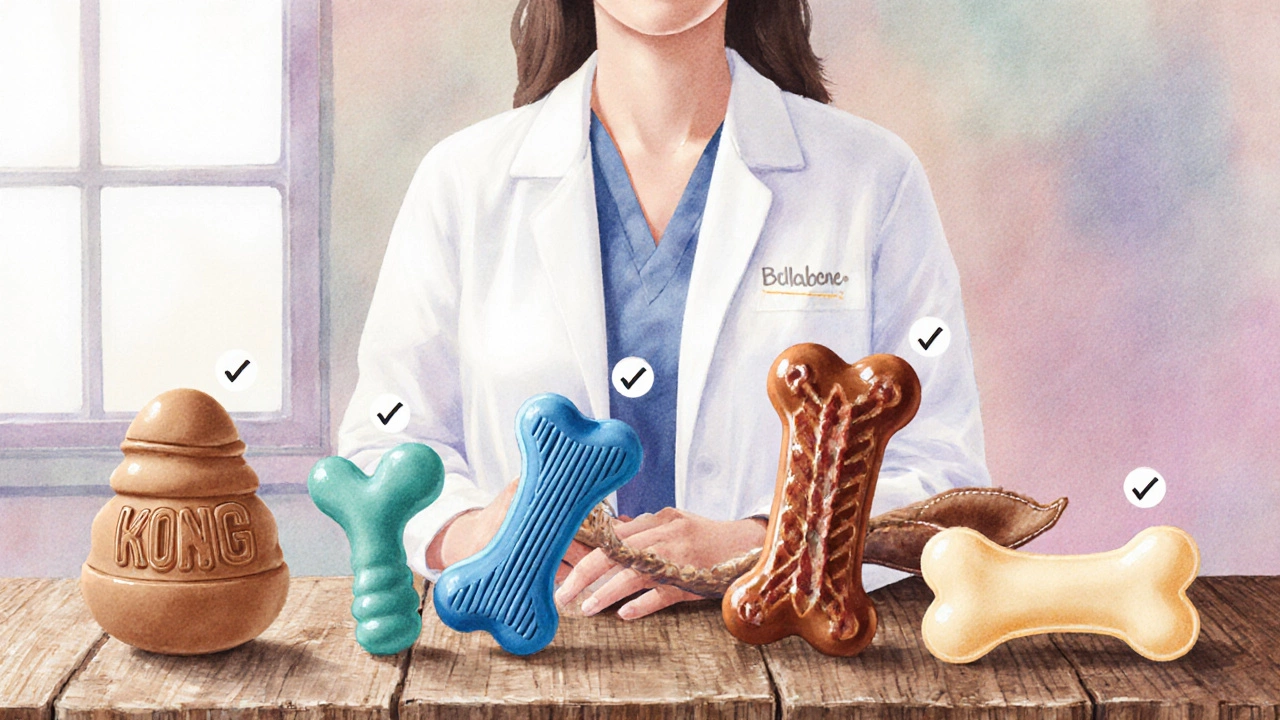
How to Choose the Right Chew for Your Puppy
Every puppy is different, so match the toy to three key factors:
- Age and teething stage: New teethers (8‑12 weeks) benefit from softer, flexible toys like the KONG Classic that can be frozen for extra relief.
- Breed size: Small breeds (e.g., Chihuahua) need tiny, lightweight options; giant breeds (e.g., Labrador) require sturdy, larger chews like the Nylabone Heavy Duty line.
- Chewing style: Some pups love shredding (choose natural hide or bully sticks), while others prefer gnawing on hard, dense items (opt for reinforced nylon or yak chews).
Cleaning and Maintenance Tips
Even the safest chew can become a breeding ground for bacteria if you ignore hygiene. Follow these easy steps:
- Rinse rubber toys with warm, soapy water after each use; most can be boiled for 5‑10 minutes to sterilize.
- Wash nylon chews in the dishwasher’s top rack or hand‑wash with mild detergent.
- Inspect natural chews (bully sticks, hide bones) for splintering daily; discard any piece that begins to crumble.
- Store toys in a dry, ventilated container to prevent mold growth.
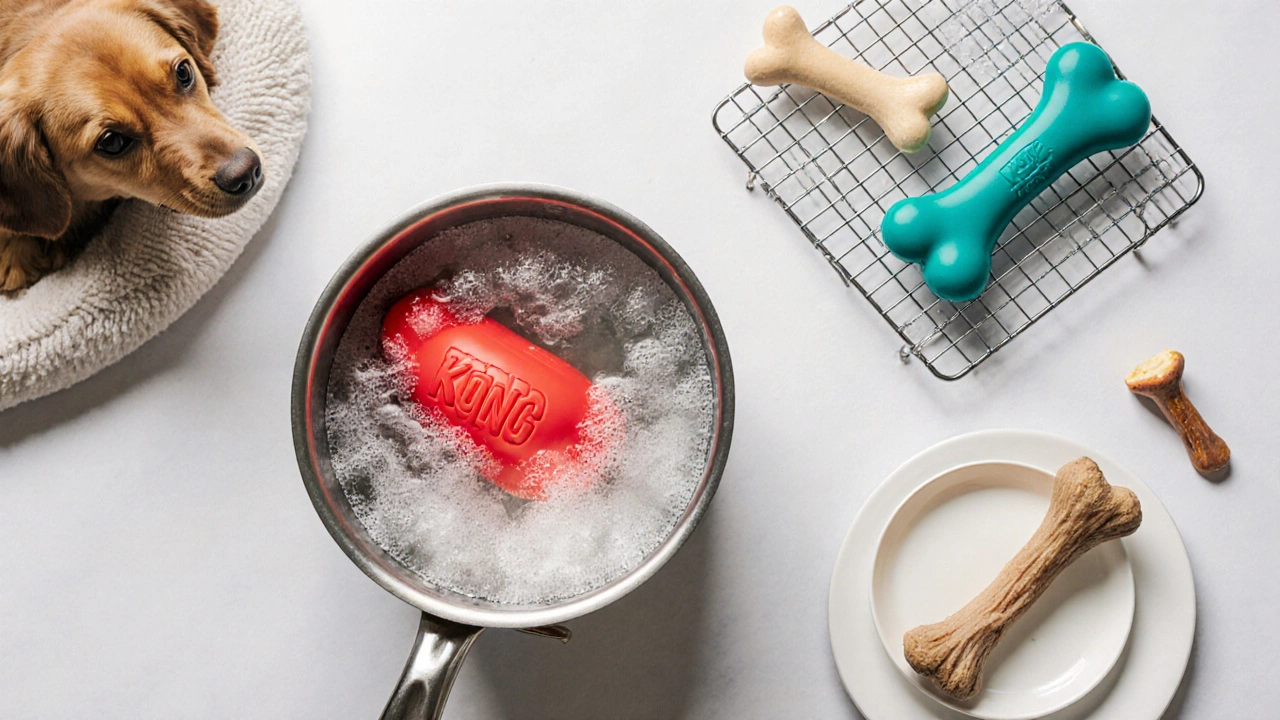
Common Mistakes to Avoid
Even well‑meaning owners make errors:
- Choosing the wrong size: A toy that’s too small can be swallowed, leading to choking.
- Leaving unattended: Supervise chewing sessions, especially with new toys, until you know they hold up.
- Buying cheap, low‑quality plastic: Those break into sharp shards that damage gums and intestines.
- Ignoring dental health: Toys without texture miss out on the gum‑massaging benefits that vets love.
Quick Safety Checklist
Before you hand over any chew, run through this short list:
- Is the toy made of a non‑toxic material?
- Is it the correct size for your puppy’s weight?
- Does it have a textured surface for dental cleaning?
- Can it be easily cleaned or sterilized?
- Are there any loose parts that could become a choking hazard?
If you answer “yes” to all, you’ve got a vet‑approved chew in hand.
Can I give my puppy rawhide?
Rawhide can be risky because it often contains chemicals and can splinter. Most veterinarians recommend supervised, limited use of high‑quality, additive‑free rawhide, or better yet, switch to safer alternatives like bully sticks or reinforced nylon chews.
How long should a chew session last?
Aim for 10‑15 minutes at a time. Longer sessions can tire your puppy’s jaw and lead to over‑chewing, which sometimes damages teeth.
Is it okay to freeze a KONG?
Freezing a KONG filled with peanut butter or yoghurt gives extra soothing relief for sore gums and prolongs chewing time. Just be sure the filling isn’t sweetened or salted.
What signs show a chew is no longer safe?
Look for cracks, sharp edges, or pieces breaking off. If your puppy starts to bite the toy aggressively and leaves fragments in the mouth, discard it immediately.
Do dental chews replace regular tooth brushing?
Dental chews are a helpful supplement, but they don’t replace brushing. Aim for a weekly brushing routine in addition to using chews.

